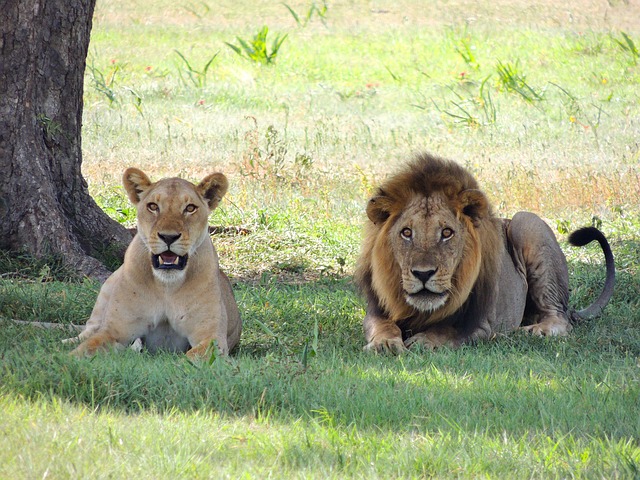
Geographical Information
The Serengeti covers an area that starts from the Ngorongoro Crater and continues all the way to the border of Northern Tanzania. Geographically, the area is a large chunk that is as big as 30,000 sq km. For ¾ of the year, this area also plays host to the wildebeest migration. It has earned a permanent place on the list of Africa’s most beautiful wildlife-rich areas. Therefore, it is no surprise that it is also a safari destination.
Historical Information
The Serengeti was converted into a park of the same name. It all started when an American explorer by the name of Stewart Edward White came across this piece of land in 1913. It is through this explorer’s journal records that he kept making as he ventured into the northern part of the Serengeti that the world discovered it too! Twenty years later, the area was transformed into the Serengeti National Park.
You will find the Big Five i.e. the animals that most of us want to see while on a safari in the Serengeti. The animals that are included on the Big Five list are leopards, lions, Cape Buffaloes, rhinos, and elephants. Then there are also the hundreds and thousands of eland, kongoni, topi, impala, and Grant’s gazelle that also call the Serengeti their home! Lastly, there is the wildebeest annual migration where the visitors can watch more than 6 million hooves wildebeest, Thomson’s gazelle, and zebra in motion!
Summer vs. Winter Safaris
Summers
The summer season in Serengeti starts in December through March. It is thought to have the hottest days but even so, the highest and lowest average temperatures fluctuate between 28-15 °C. Short rains begin in late November, which is when the dry season ends. While the heavier rains do not start until late March, it is recommended that visitors add an extra day to their itineraries, just in case. The summer is the time when more than 150 species of birds start migrating south. January-March is also considered the ideal season for climbing Kilimanjaro. About 2 million wildebeest and zebras can also be seen grazing in the southern part of the Serengeti, December-March. Since this is also when they give birth to calves, the summer is also called the calving season.
Winters
The winter season starts in July and goes all the way through to August. This is a season that is dry and without any rain. If you are going to the Serengeti for game viewing, then this is the time to go! Dried up waterholes mean that most animals would be concentrated around the remaining ones. It is also a good time for climbing Kilimanjaro. The wildebeest/zebra herds start moving north towards the Masai Mara in Kenya in this season.
 Information about Luxury Safari in Serengeti National Park
Information about Luxury Safari in Serengeti National Park
Itineraries
A Serengeti luxury safari package would include a journey through the Rift Valley to the Serengeti National Park. The tour will be conducted in a seven-seater four-wheeled safari vehicle. You can take pictures as you witness thousands of species, including the lions, buffaloes, zebras, elephants, wildebeests etc. There is also the option of enjoying a balloon safari that will start very early in the morning and cover the Serengeti savannah. A visit to the Ngorongoro Crater, which has been labeled a UNESCO World Heritage Site, is also included. The Ngorongoro Conservation Area is also on the list and you will come across more than 20,000 large mammals that call the area their home. These include hippos, zebra, black rhinos, gazelles, elephants, buffalo, waterbucks, eland, bushbucks, vervet monkeys, baboons, and warthogs, as well as, hyenas, lions, jackals, and leopards.
Accommodation
You stay at the Four Seasons Serengeti while on this safari. The meals and drinks that you partake of will be a part of the package.
Package
- You will be provided conveyance to and from the airport
- You will also be allotted a guide
- Flying doctor insurance

Simply one of the best parks to visit for safari purposes. Incredibly high number of wildlife throughout the park and it’s vastness is just awe-inspiring. Just visit Serengeti